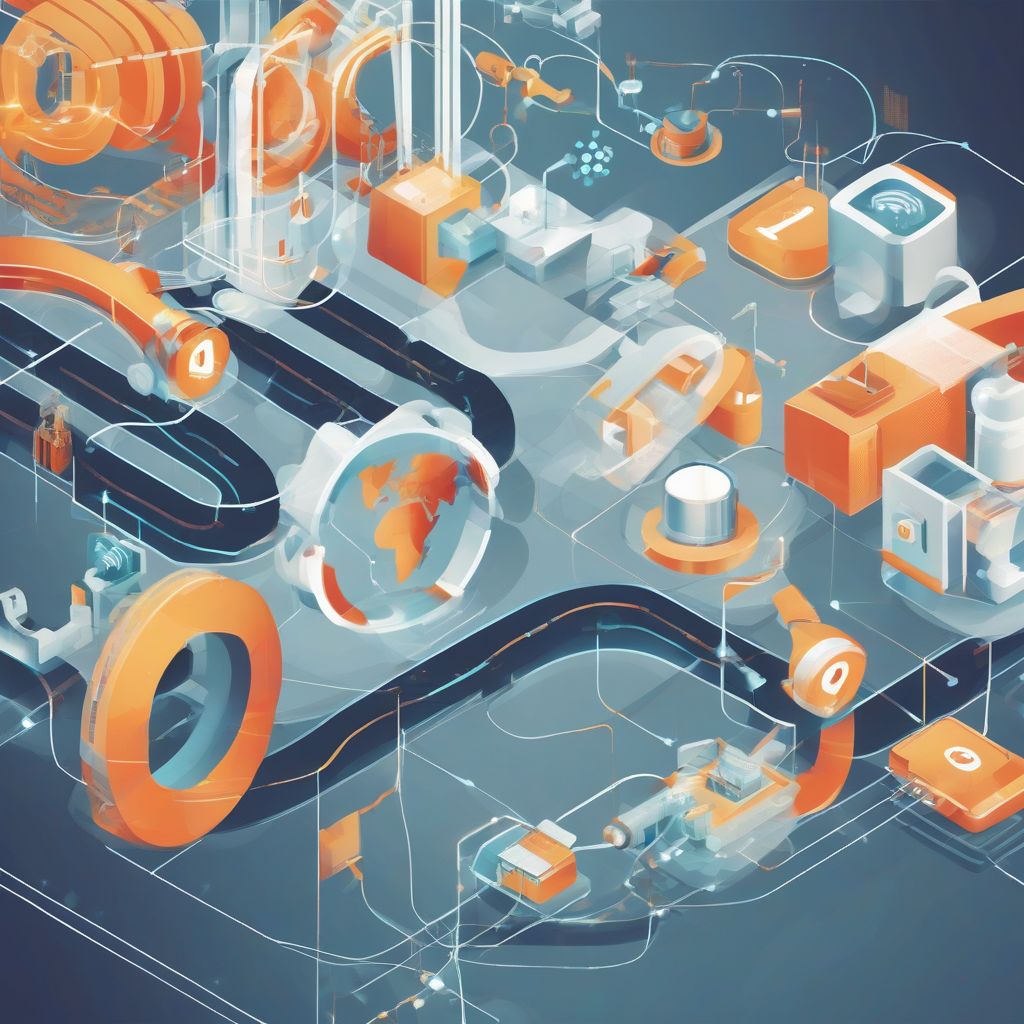Telecommunications Industry Trends: A Deep Dive

The telecommunications industry is in a constant state of evolution, driven by technological advancements and shifting consumer demands. Understanding these Telecommunications Industry Trends is crucial for businesses, investors, and individuals alike to stay ahead of the curve and make informed decisions. This article will delve into the major trends shaping the future of telecommunications.
The Rise of 5G and Beyond
5G, the fifth generation of cellular mobile communications, is rapidly changing the landscape of the telecommunications industry.
What Makes 5G a Game Changer?
- Blazing-fast speeds: 5G offers significantly faster download and upload speeds compared to its predecessors, enabling seamless streaming, faster file transfers, and enhanced mobile experiences.
- Ultra-low latency: With minimal delay in data transmission, 5G paves the way for real-time applications like virtual reality (VR), augmented reality (AR), and autonomous driving.
- Increased capacity: 5G can support a massive number of connected devices simultaneously, catering to the growing demand for Internet of Things (IoT) applications.
Beyond 5G, research and development are already underway for 6G, promising even faster speeds, lower latency, and more groundbreaking capabilities.
The Internet of Things (IoT) Explosion
The Internet of Things (IoT) refers to the network of interconnected devices, vehicles, and appliances embedded with sensors, software, and network connectivity, enabling them to collect and exchange data.
IoT’s Impact on Telecommunications
- Increased data traffic: The proliferation of IoT devices generates massive amounts of data, requiring robust and scalable network infrastructure.
- New revenue streams: Telecom operators are exploring opportunities in providing connectivity solutions and managing data for businesses leveraging IoT.
- Focus on security: Ensuring the security of connected devices and data transmitted over the network is paramount in the IoT era.
From smart homes and wearable devices to industrial automation and smart cities, IoT is transforming various sectors, with telecommunications playing a pivotal role.
Cloud Computing and Edge Computing
Cloud computing, which involves delivering computing services over the internet, has become an integral part of the telecommunications industry. Edge computing, on the other hand, brings computation and data storage closer to the data source, reducing latency and improving efficiency.
Telecommunications and the Cloud/Edge Synergy
- Network optimization: Cloud and edge computing enable telecom operators to optimize network performance, enhance service delivery, and reduce operational costs.
- New service offerings: Telecom providers are leveraging cloud infrastructure to offer innovative services like cloud storage, software-as-a-service (SaaS), and platform-as-a-service (PaaS).
- 5G and edge computing: The combination of 5G and edge computing is expected to unlock new possibilities in areas like real-time data analysis, autonomous systems, and immersive experiences.
Artificial Intelligence (AI) and Machine Learning (ML)
Artificial intelligence (AI) and machine learning (ML) are revolutionizing various industries, and telecommunications is no exception.
AI and ML Applications in Telecommunications
- Network optimization and automation: AI and ML algorithms can analyze network data to identify patterns, predict potential issues, and optimize network performance automatically.
- Customer service enhancement: Chatbots and virtual assistants powered by AI can provide instant support, answer queries, and resolve issues efficiently, enhancing customer satisfaction.
- Fraud detection and prevention: AI and ML algorithms can analyze network traffic and user behavior to detect and prevent fraudulent activities, bolstering security.
 AI-Powered Network Management
AI-Powered Network Management
Cybersecurity: A Top Priority
As the telecommunications industry becomes increasingly interconnected and reliant on data, ensuring cybersecurity is more crucial than ever.
Addressing Cybersecurity Challenges
- Securing 5G networks: 5G’s increased complexity and reliance on software-defined networking (SDN) present new security challenges that need to be addressed effectively.
- Protecting IoT devices: With billions of connected devices, securing the IoT ecosystem from vulnerabilities and cyberattacks is paramount.
- Data privacy: As telecom operators handle vast amounts of sensitive user data, ensuring data privacy and compliance with regulations is critical.
Sustainability and Environmental Responsibility
The telecommunications industry is increasingly focusing on sustainability and reducing its environmental impact.
Green Initiatives in Telecommunications
- Energy efficiency: Telecom companies are investing in energy-efficient network equipment and infrastructure to reduce their carbon footprint.
- E-waste reduction: Proper e-waste management and recycling programs are being implemented to minimize the environmental impact of discarded electronic devices.
- Sustainable supply chains: Telecom operators are working towards establishing more sustainable supply chains, ensuring responsible sourcing of materials and ethical manufacturing practices.
Conclusion
The telecommunications industry is undergoing a period of significant transformation, driven by technological advancements, evolving consumer demands, and a focus on sustainability. Understanding and adapting to these telecommunications industry trends is essential for businesses, investors, and policymakers to thrive in the ever-evolving digital landscape. From the rollout of 5G and the explosion of IoT to the adoption of AI and the imperative for robust cybersecurity, these trends will continue to shape the future of telecommunications and its impact on our lives.


Leave a Comment